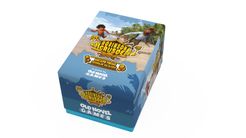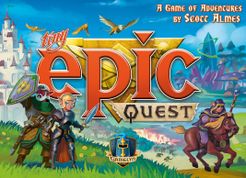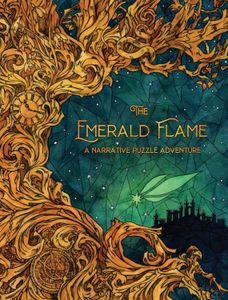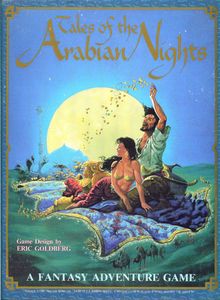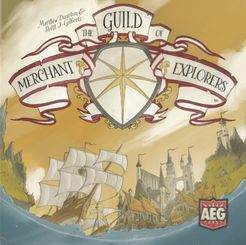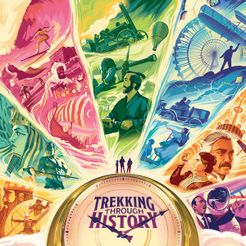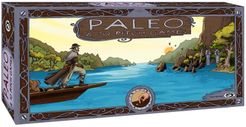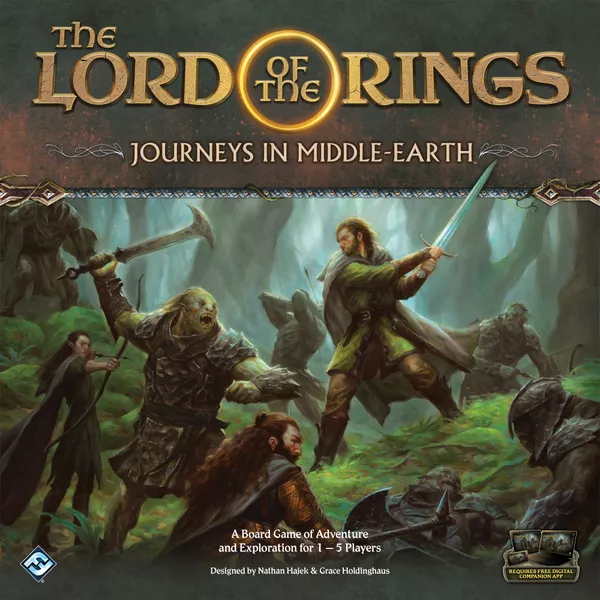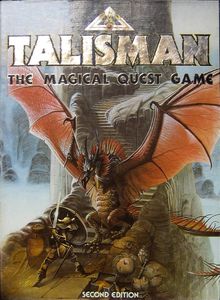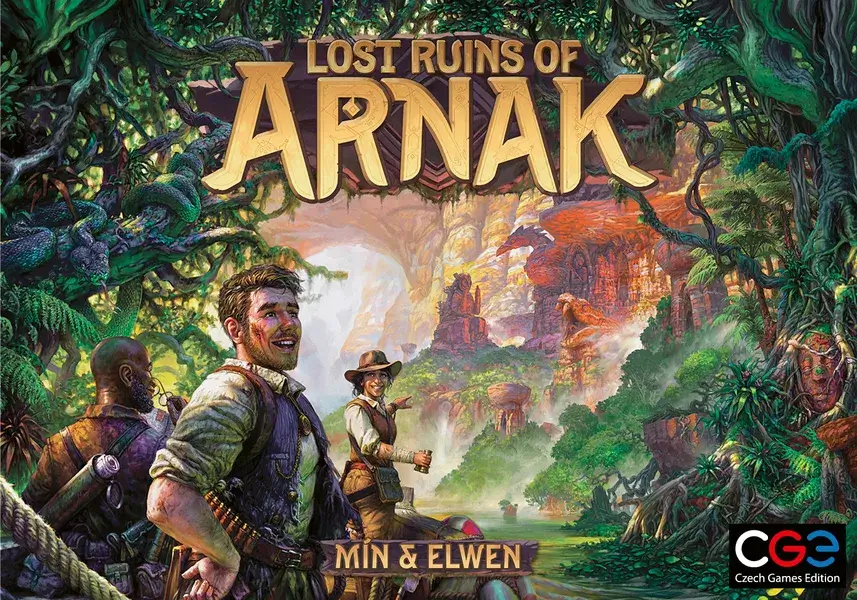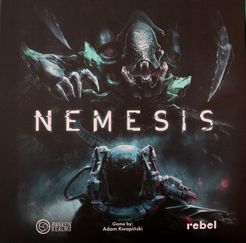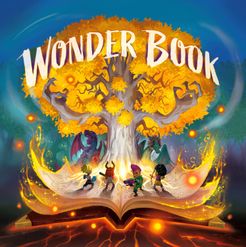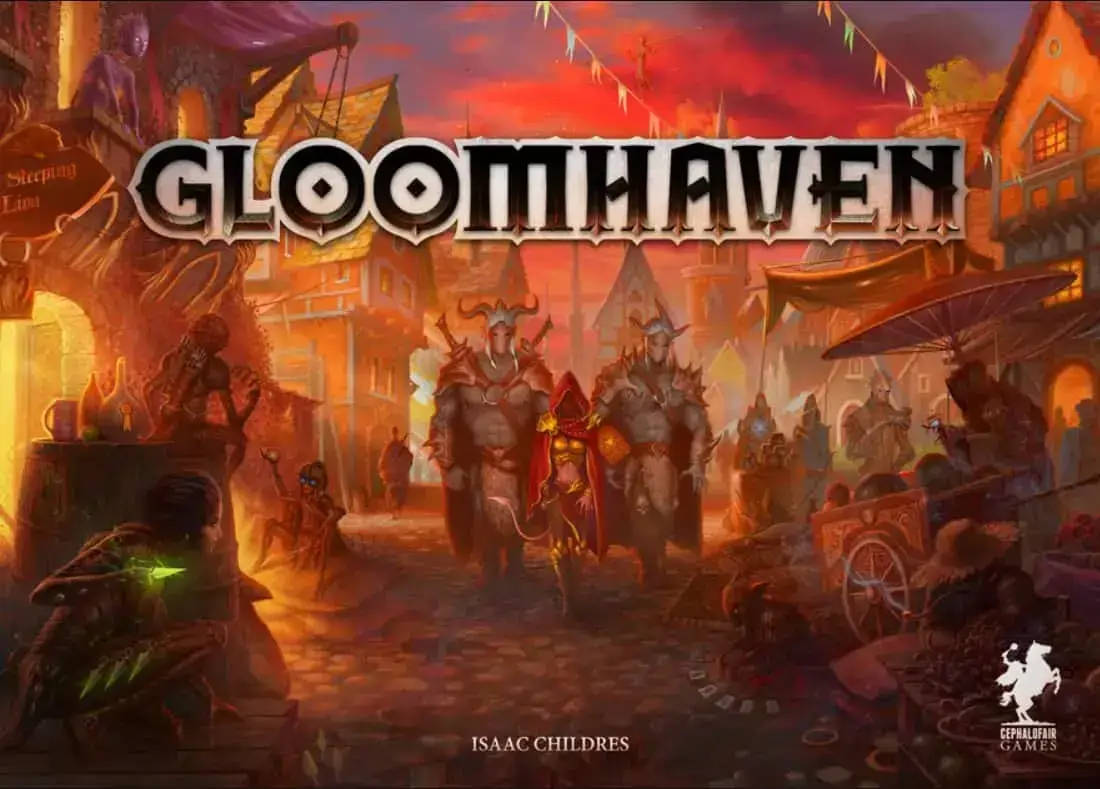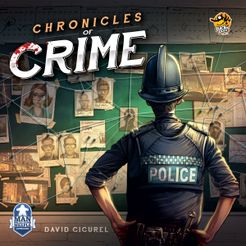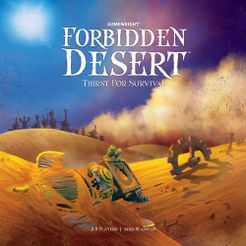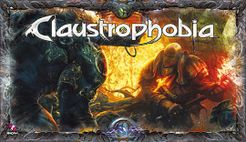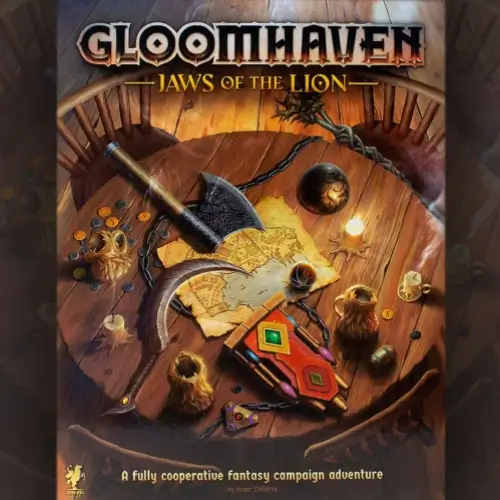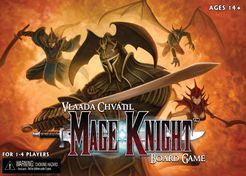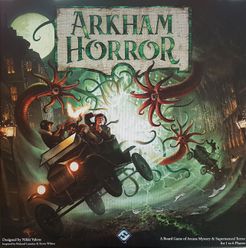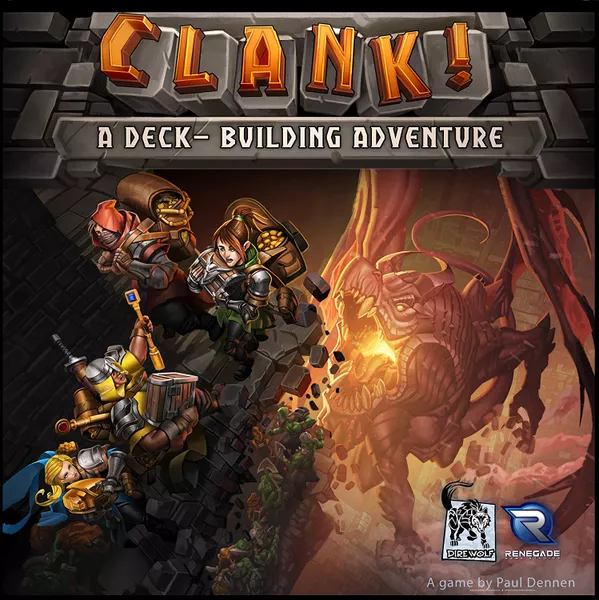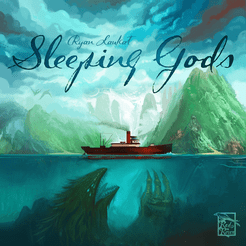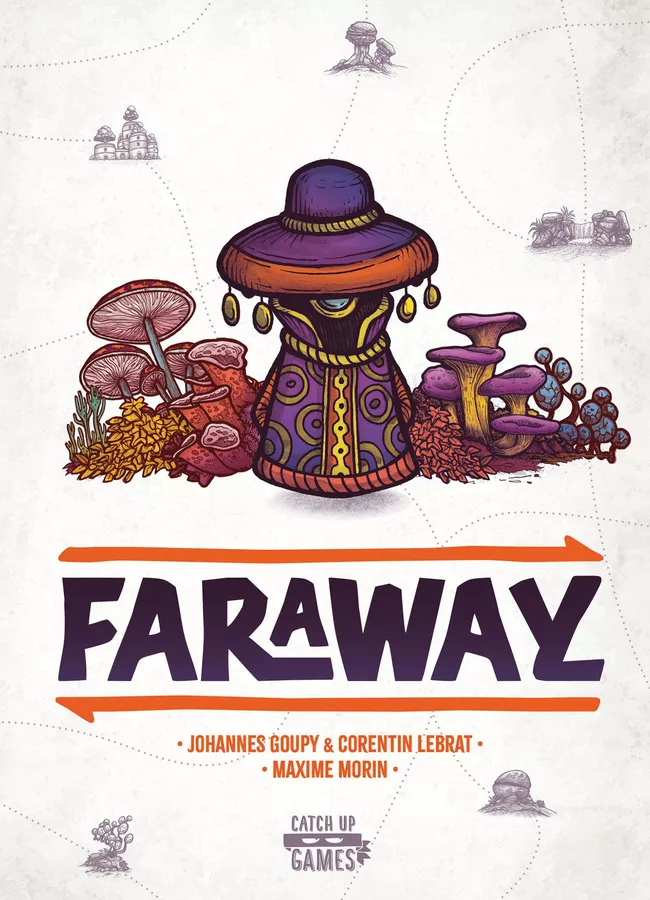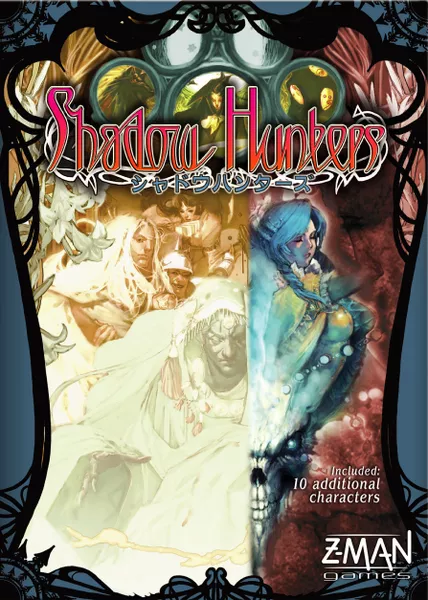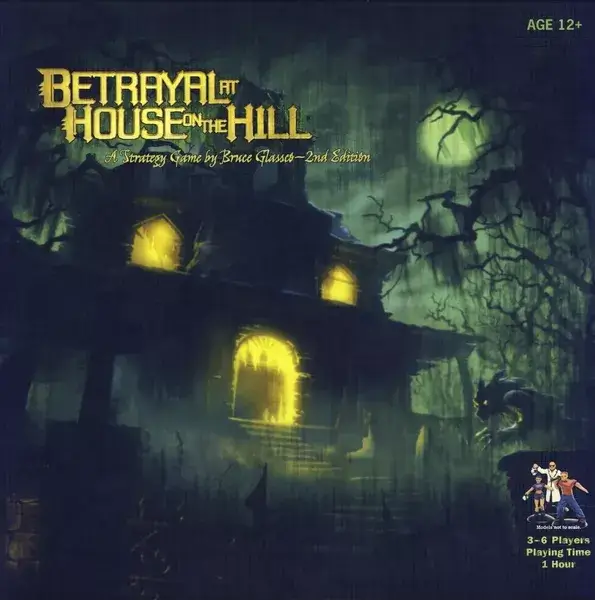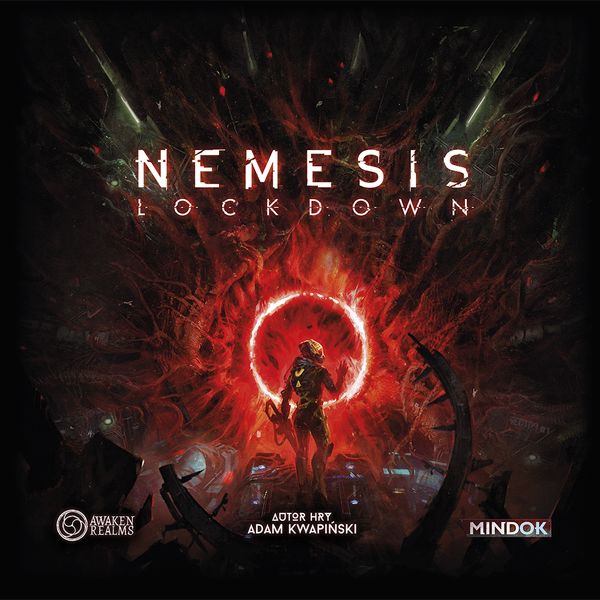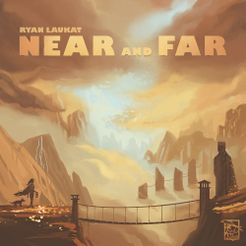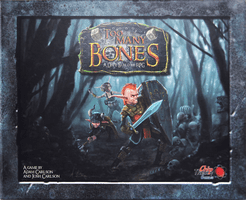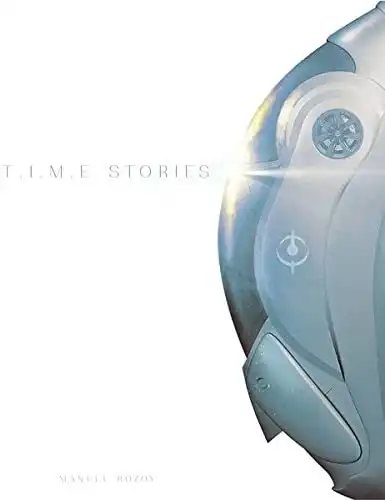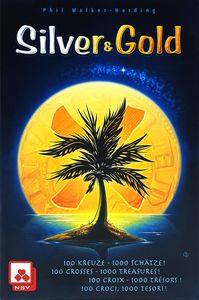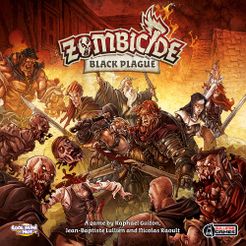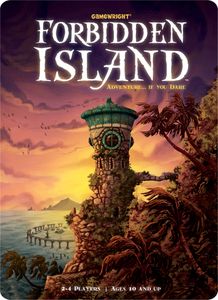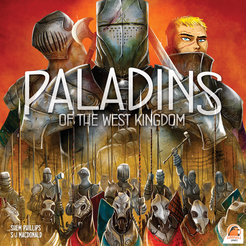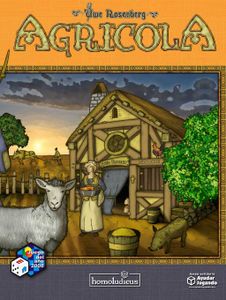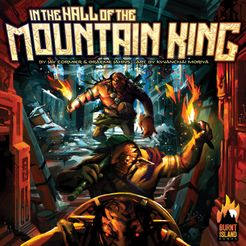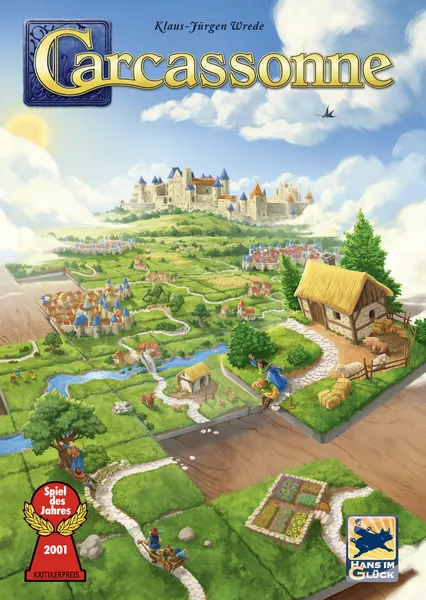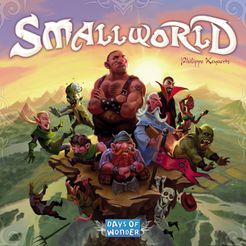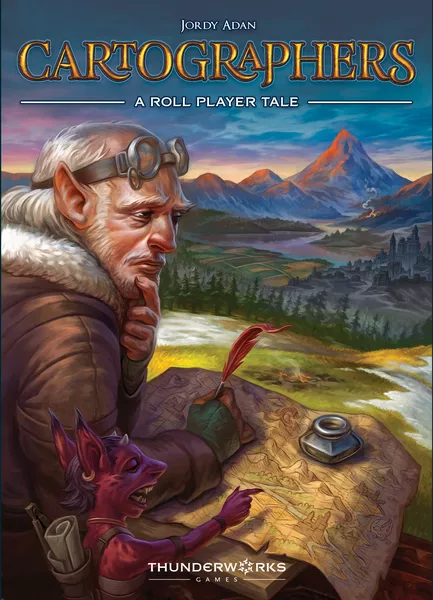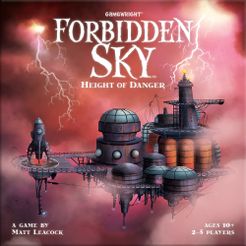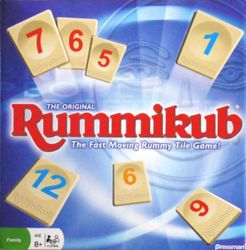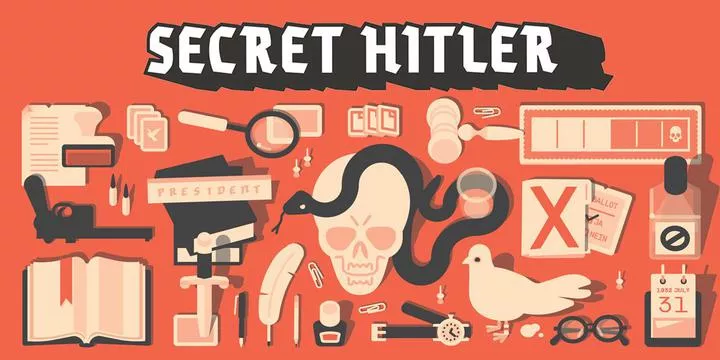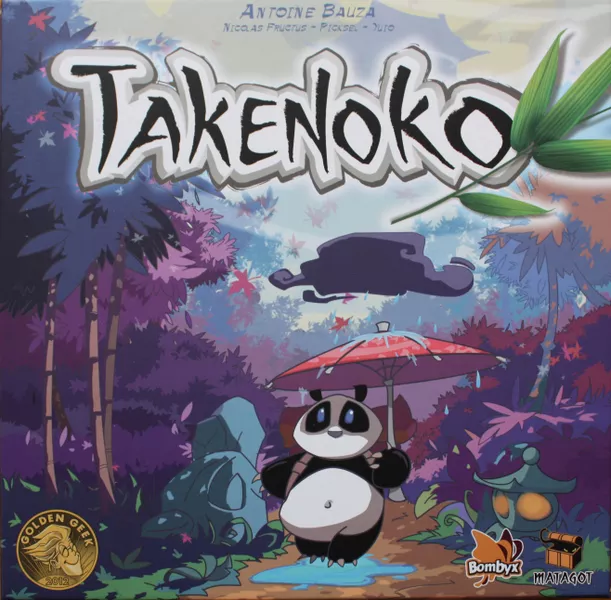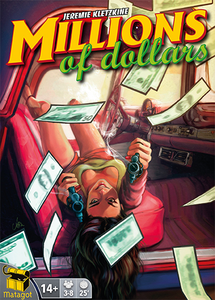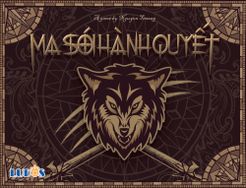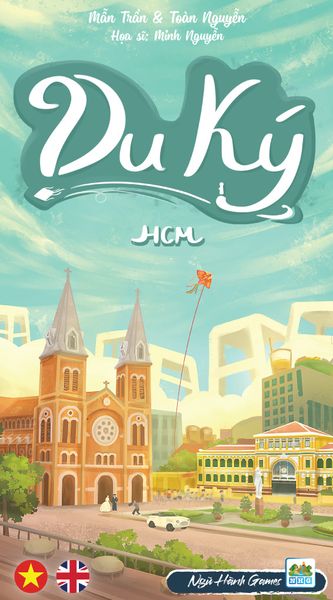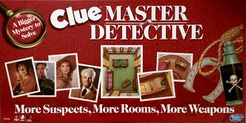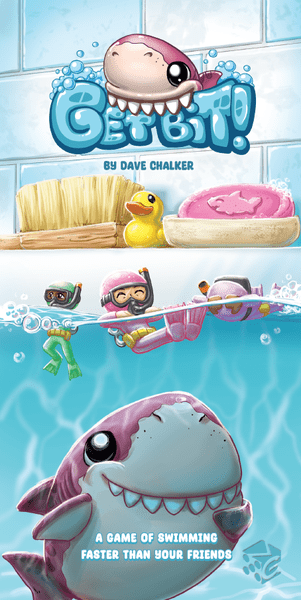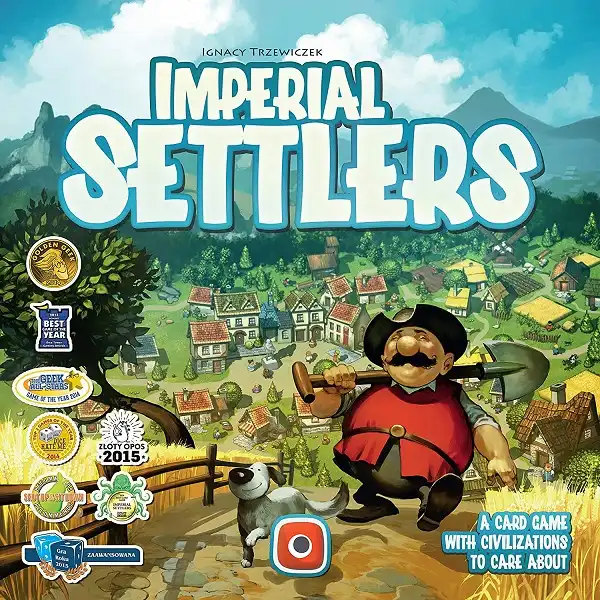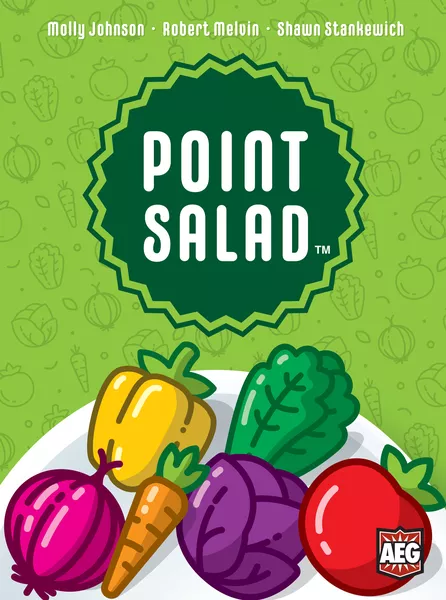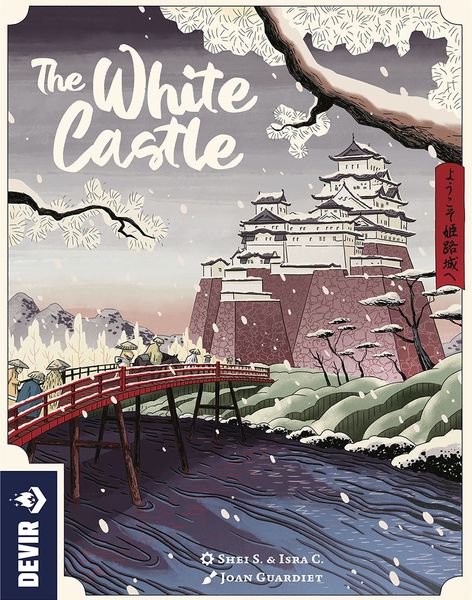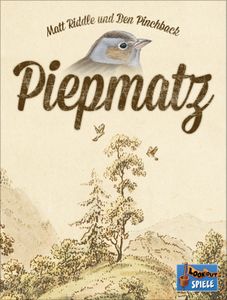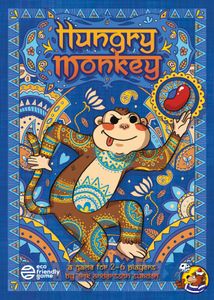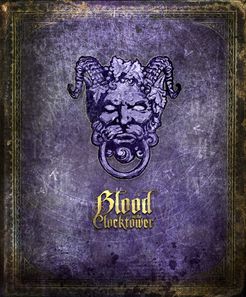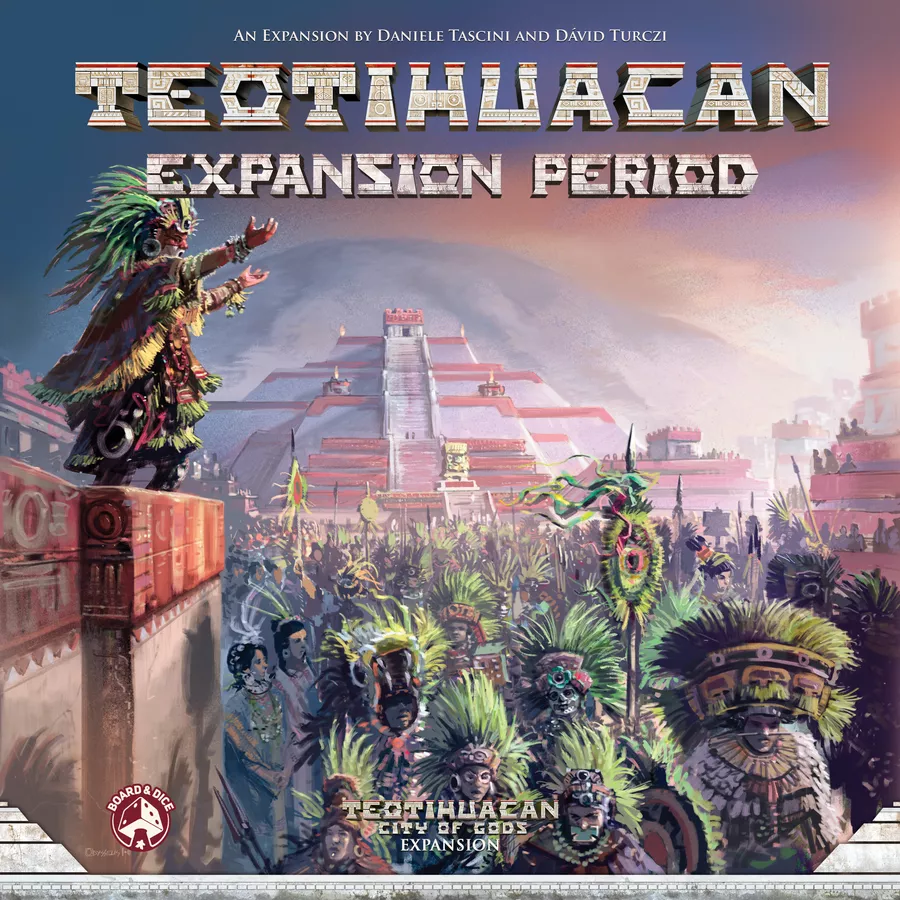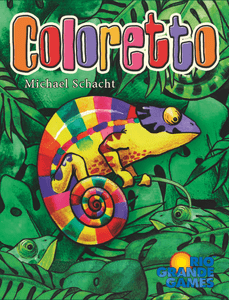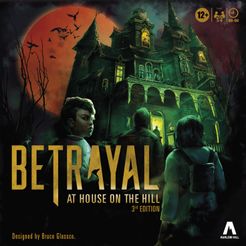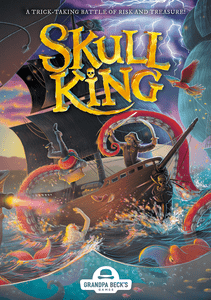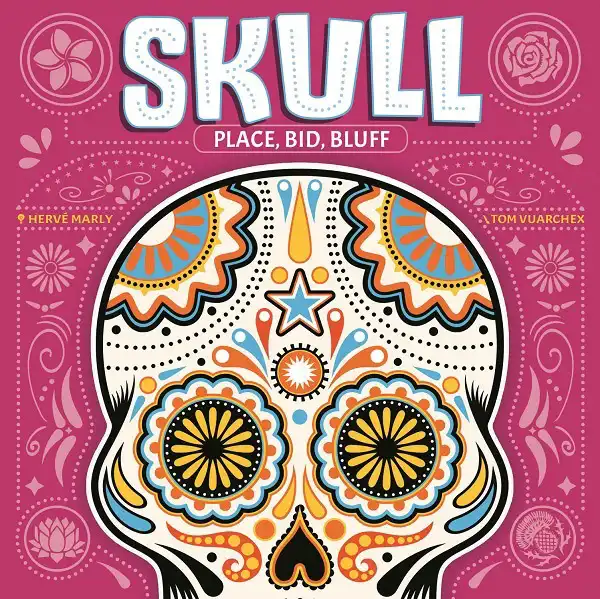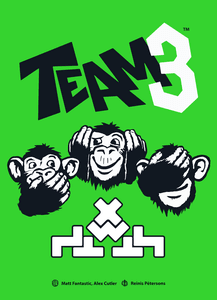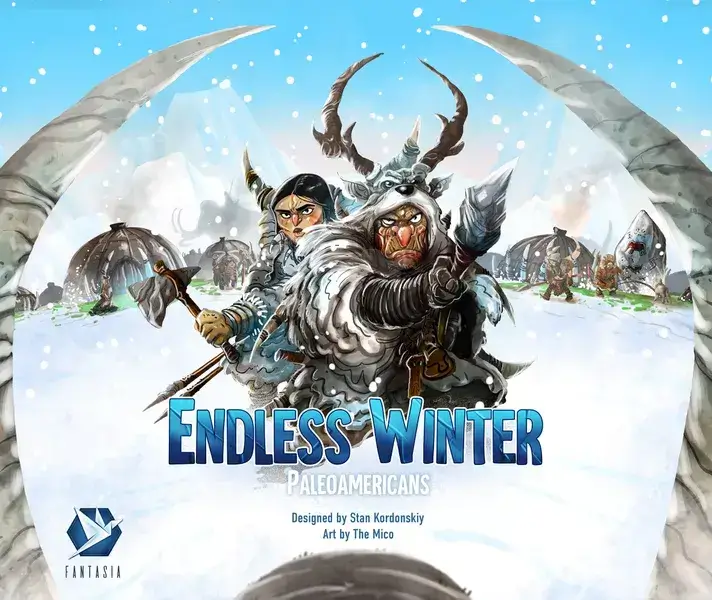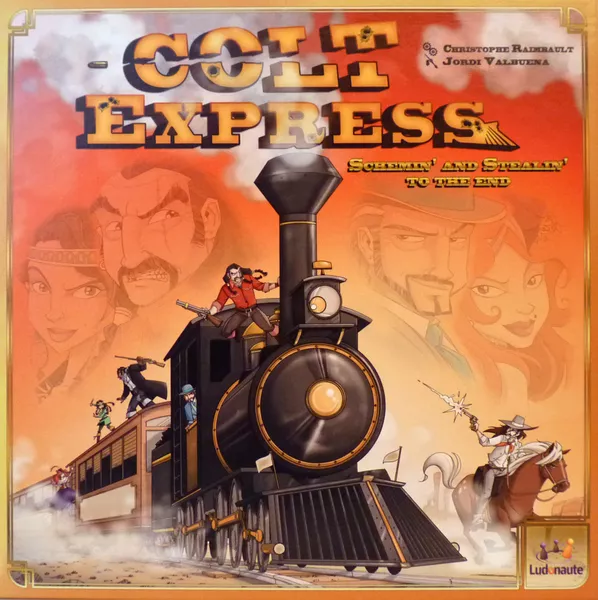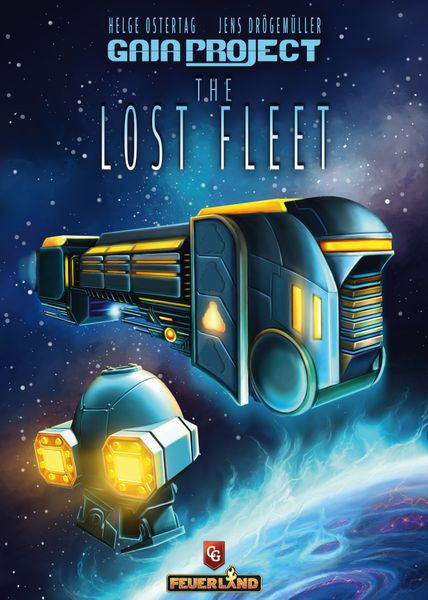Robinson Crusoe: Escape from Despair Island (2020)
Designer: Niko Huttu
Publisher: Old Novel Games
- Overview
- How to Play
- Videos
- Play Now
- Ratings & Comments
“Never any young adventurer's misfortunes, I believe, began sooner, or continued longer than mine.”
― Daniel Defoe, Robinson Crusoe
Three centuries ago, a singular story perfectly captured the drama of shipwreck and survival, hope and redemption. That story was Robinson Crusoe. Now this timeless tale is brought to life once more in a dynamic card game, but this time you are the one who needs to survive and make it off the island.
This ancient tale it’s alive again!
In 1651 a young man leaves home for an adventure at sea. He is shipwrecked on an island, 40 miles out to sea. He spends the next 28 years on this island, gathering food, resources, and tools, and battling against insurmountable odds to stay alive. He hunts, raises animals, reads the bible, and begins to turn his focus and attention inward. He becomes a man of God, and learns to accept his fate, growing spiritually. He realizes that he has everything he needs to survive and live in peace.
Combining themes of hope, strength, and resiliency, this strategic, multi-layered game will test your skills in more ways than one, as you navigate through cannibal attacks, deadly storms, and your own inner turmoil.
Robinson Crusoe: Escape from Despair Island is a fast-paced, family-friendly game for 1-4 players, ages 14 and up. Offering a new gameplay experience every time, with vibrant art on 160 cards, push-your-luck mechanics, and the age-old theme of survival and escape, it will leave you wondering if you have what it takes to make it home alive.
Game PlayThe deck is shuffled, and every player is dealt five cards face down. These cards represent the players’ food supply, with one card being equal to one day's worth of food.
The game proceeds in a clockwise direction and includes two phases of play during each player’s turn - the exploration phase, and the market phase.
During exploration phase the active player draws cards from the deck in order to take one card either food card or some camp cards to their camp. Market phase opens for other players once the active player has chosen what card to take.
Pay every turn
At the beginning of every turn, a player must discard one food card into the discard pile. This is the cost of playing the game and represents one day's food supply being used up.
Exploration turn
During exploration turn, players take turns flipping cards to find the resources they need. You can think of each flipped card as a new resource or ability your character has uncovered. A player can flip up to 10 cards. The aim of the exploration phase is to find food and resources and to build the camp and character. Ultimately the goal is to escape from the island.
After a maximum of ten cards have been flipped, the active player chooses which card they are going to keep, leaving the remaining cards on the table for the other players to buy.
There are two ways to take cards from the drawn cards
1) Harvest food cards i.e cards with a green palm tree symbol on the top left and a food icon on the bottom right. When harvesting, take the indicated amount of food from draw deck and place the food card on the discard pile.
2) Take camp cards such as construction cards with a brown upper left corner symbol on the top left, character cards with a blue upper left corner symbol, or resource cards with upper left corner left green palm tree corner symbol, other than food cards, to your camp if you meet the requirements.
The camp can consist of items like a hut, palisade, box or boat, as well as resources such as a rifle, an axe or gunpowder. Character growth and actual character cards are also placed in the camp. When a player builds an item in their camp, the card is placed image side up on the table in front of the player.
A player can continue flipping cards until either:
a) they have flipped a total of ten cards, in which case the player is forced to decide what card to take, or
b) they decide to stop and take some of the flipped cards to their camp, or alternatively harvest food when the food card is discarded and food cards are taken from the draw deck, or
c) they flip a total of two threat cards which from the player cannot defeat the more difficult one.
Defeat the threats
If a second threat card is flipped, the player must then defeat the greater of the two threats (denoted by 1, 2, or 3 skulls in the top right corner of the card) if they want to take some flipped card from the table to the camp.
The threat is defeated by having the cards listed on the card’s "requirement row". Each card has its own symbol. In the above example player have no any cards in the camp, so the exploration turn is over for that player and player do not get to keep any of the cards they have flipped.
If the player is able to defeat the threat, the card is placed on the discard pile, and they can either continue the exploration phase and drawing cards, or take the indicated amount of food cards and add them to their pile. The options available after defeating the threat are visible on the bottom of the card where there are card deck icon OR food icon with number.
Build your camp
When building the camp by taking a construction unit like a boat using an axe and wood, the wood is discarded (it has the finite symbol '1') while axe is not discarded (it has the infinite symbol ∞).
With every draw you risk encountering threats and losing food, but the one thing you need the most could be waiting under the next card. How far will you go to survive?
There are many decisions to be made:
1) Stop flipping cards earlier, and minimize the chance for other players to buy the cards they need during the market phase.
2) Keep flipping, and you have a better chance of finding the cards you need, allowing you to gain more food from other players who want to buy these cards from you later. But push your luck too far and you will be defeated by the second threat card, which you cannot defeat.
3) Push for consistent development of your resources and character, or grow your food pile first and purchase more helpful cards later?
4) Grow your food pile aggressively, and risk losing half of them if a bad luck card shows up.
5) Use up your food supplies as you go, and you may find them doubled if a good luck card appears.
Market phase
After player has done his exploration turn, the market phase starts. Moving in a clockwise direction, all other players are now given the opportunity to buy any cards that are left from the exploration phase.
The cost of each card is denoted by a number in the top right corner, which represents the number of food cards the buying player must then discard to acquire the card. On top of this number, the buying player must also give one food card to the selling player.
If there is no number in the top right corner (as with the goat card) then the buying player does not need to discard any food cards, but they do still need to give the selling player one food card as payment.
The market phase continues until all the cards have been bought or the players do not want to buy any more. Any cards left on the table at the end of the market phase are then placed in the discard pile.
Grow your character
It will take more than just food and shelter to keep player alive. Player will need to teach, pray, and read to build up character, and better the odds of escaping alive. By collecting character growth cards, a player can get characters, which give effects and open up paths to victory.
Victory paths
a) Beacon Campfire victory path, either with the Man of God character card or with a camp of 18 victory points
b) Escape the Island victory path, either with the Teacher character card or with a camp of 18 victory points
c) Victory point strategy, by having the Wise Man character plus 25/20/17 VPs (4/3/2 players)
Beacon campfire
You could draw the attention of a rescue ship, but you will need to become a Man of God OR build a camp with at least 18 VPs and find wood and gunpowder to build a fire.
Escape from the Island
You can set your sights on building a boat, but you will need to find Friday and teach him how to help you.
Victory point
Finally, you can pray and read to become a wise man and build up your victory points to beat the other players.
Game ends
The game ends in either of the following situations:
a) When the draw deck has been played through twice, in which case the player with the most victory points (VPs) wins
b) When any player achieves one of the three winning strategies: Beacon Campfire, Escape the Island or Victory points.
Explanation of card types
Food cards: There are two kind of food cards, regular food cards and food & resource combo cards, such as wood and goat, that player can use either as a food card (harvested like other food cards) or as a resource card (placed in the camp like regular resource cards). These are necessary in order to maintain an adequate food supply.
Resource cards: Resource cards have two kinds, regular resources like axe and wood, and food & resource combo cards (see above).
Construction cards: There are two kinds of construction cards, regular ones and combo ones, combo having two construction units in the same card. These cards are important for protecting yourself and also enabling some victory paths.
Exploration cards allow a player to take extra cards or double the amount of food collected, which boosts the exploration phase significantly.
Good & Bad luck cards: Good luck cards give 4 food to the player with the least food cards. Bad luck cards force players with more than 6 food to lose half of their food cards. Both of these cards are enforced as soon as they are drawn.
Character cards: There are two types of character cards, character growth cards and character cards. Growth ones are important prerequisite cards for the actual character cards, Man of God, and Wise man cards. They are necessary not only for protection, but are also requirements for special victory scenarios.
The special character card Friday helps to protect the player against many threats. It also allows for an additional card to be drawn when exploring, but it also forces you to pay one more food when you buy.
Victory cards: Cards like Beacon Campfire and Escape the Island are key victory cards.
Said about the game
“If you’re looking for something that re-creates the high drama of it’s subject matter…it does a really great job.”
– Rahdo
“The design and the art... I absolutely am in love with. The way the cards are laid out, it makes a lot of sense to me. The art is great, especially for a company that’s just developing.”
– Board Game Mechanics
“The packaging is so solid and lovely. Really substantial box. Definitely a game you will be taking around with you.”
– In the Den
“Just the right amount of randomness, and the right amount of press-your-luck tension, which I liked the most.”
― Undead Viking
“Robinson Crusoe: Escape from Despair Island is a fun, unique blend of mechanics. At the end of this short game, you feel a sense of accomplishment that you built something great. Overall I really enjoyed this game.”
― Joel, Boardgame Mechanics
"The artwork, icons, and mechanics are thematic... it's fun and feels realistic trying to push your luck to get food and items to survive."
― Meeple University
“A game full of far more depth than you would suspect.”
― Nick, Board Game Brawl
"This is its own beast."
― Rahdo
“The packaging is so solid and lovely. Really substantial box. Definitely a game you will be taking around with you.”
– Gavin In the Den
“The artwork is just fantastic.. absolutely amazing”
― Undead Viking
"A lot of gaming in just a deck of cards, nice artwork and fun to push your luck!"
― Boardgames With Niramas
"The game that stays true to its name. If you are in the market for quick deck building with simple easy-to-learn mechanics, and multiple paths to victory, look no further than Robinson Crusoe: Escape from Despair Island."
- Boardgame Revolution
The team
Niko Huttu - Game Design
Founder of Old Novel Games and the designer of Robinson Crusoe: Escape from Despair Island, Niko loves games (both PC and tabletop) and he is passionate about old novels. But since the birth of his two children, Niko’s relationship with games has changed. His ideas often come to him when he is reading to his children, and that is where the things he is the most passionate about in life come together. He believes every good book deserves to be transformed into a game, and that every avid reader deserves the opportunity to relive their favourite stories.
Adrian Liza Clares- Art & Illustrations
Adrian is an astonishing 2D artist who can turn any idea into a stunning piece of 2D art, very quickly. And talk about an honest and humble person!
"I’m Adrian Liza, a Spanish concept artist based in Gothenburg, Sweden. During these years, I’ve been developing visual ideas for videogames and recently I had the chance to be part of the board game “Robinson Crusoe : Escape from Despair Island”, where I was in charge of creating the total visual aspect of the game. This project was funny and really challenging, because It was nothing like I’ve ever done before. Even so, It was easy to keep up the motivation thanks to Niko Huttu, who made of this production a marvelous experience, that I’ll never forget."
Pablo - Iconography & Layout Design
Pablo knows what it takes to be a great card game layout and icon designer. His professionalism is top notch.
Simon - Video Production & Kickstarter Support
Simon helped this project take off with his unique ability to envision the end result and bring it to life. His Venezuelan video edition team made the animation film possible. It has been a such a great honor to work with these guys!
Publisher
Published by Old Novel Games, a personal project from Niko Huttu.
Our aim is to encourage more meaningful everyday interactions between friends and family, by providing players with games that combine epic classic novels with rock solid card game strategy. Whether you’re looking for something you can play at your next picnic, after a family dinner, or even with your colleagues during your lunch break, Old Novel Games are fast, straightforward, and easy to learn, making them accessible to everyone.
“And thus I left the island, the 19th of December, as I found by the ship’s account, in the year 1686, after I had been upon it eight-and-twenty years, two months, and nineteen days;”
― Daniel Defoe, Robinson Crusoe
Videos
Where to Buy Robinson Crusoe: Escape from Despair Island (2020)
*We could earn commissions when you purchase through these links.



